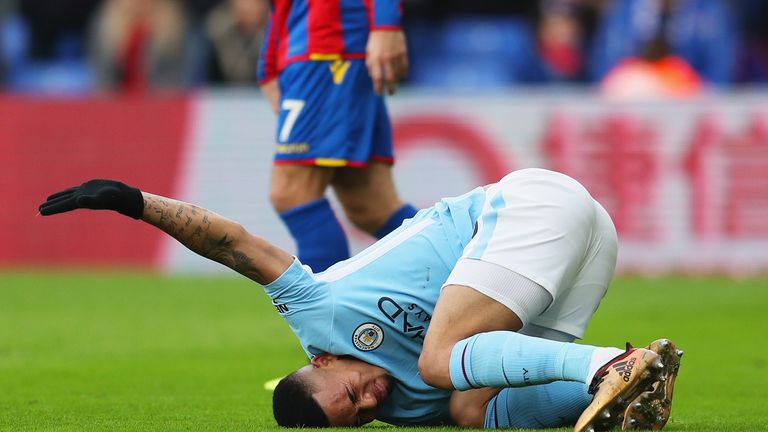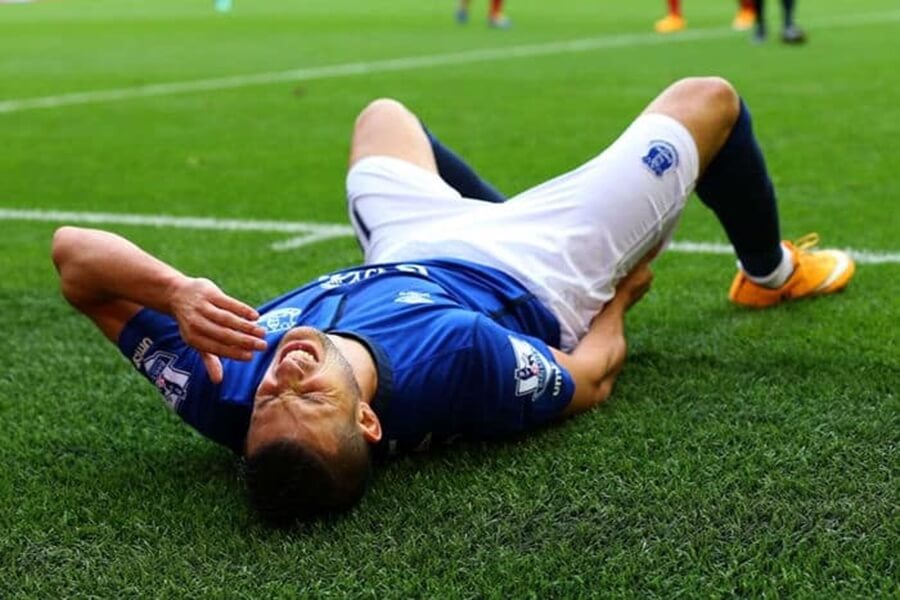Football is a beloved sport that captivates fans around the world, but it is also a physically demanding game that carries a high risk of injury. From amateur leagues to the professional ranks, players of all levels have been impacted by the injuries that can occur on the field. In this comprehensive blog post, we will explore the most common football injuries, the factors that contribute to them, and strategies for prevention and recovery.
The Most Common Football Injuries

Football is a contact sport that puts players at risk of a wide range of injuries, from minor sprains and strains to severe, career-threatening conditions. Some of the most common football injuries include:
Concussions
Concussions are one of the most serious and well-known injuries in football. The sudden impact or sudden change in direction can cause the brain to collide with the inside of the skull, leading to a range of symptoms, including headaches, dizziness, confusion, and memory loss. Concussions can have long-term consequences and require careful medical attention and a gradual return to play.
See more: keonhacai
ACL Tears
The anterior cruciate ligament (ACL) is one of the key stabilizing ligaments in the knee, and it is often the target of injury in football. ACL tears can occur when a player suddenly changes direction, lands awkwardly, or experiences a collision. These injuries can be debilitating and often require surgery and extensive rehabilitation.
Ankle Sprains
Ankle sprains are another common injury in football, often occurring when a player lands on an uneven surface or experiences a sudden change in direction. These injuries can range in severity from a mild stretch to a complete tear of the ligaments, and they can sideline players for weeks or even months.
Hamstring Strains
The hamstring muscles, located at the back of the thigh, are particularly vulnerable to strains and tears in football. These injuries can occur during sprinting, sudden changes of direction, or even during the tackling or blocking motion.
Shoulder Injuries
Football players are also at risk of shoulder injuries, such as dislocations, separations, and rotator cuff tears. These injuries can happen during tackles, falls, or collisions with other players.
Other Common Injuries
In addition to the above, football players may also experience injuries to the neck, back, wrists, fingers, and other areas of the body, depending on the position they play and the specific circumstances of the injury.
Factors Contributing to Football Injuries

The high rate of injuries in football can be attributed to a variety of factors, including:
Physical Demands of the Sport
Football is an extremely physically demanding sport that requires players to engage in a wide range of movements, including sprinting, jumping, cutting, and colliding with other players. These physical demands, combined with the high-speed nature of the game, can put a significant amount of stress on the body and increase the risk of injury.
Intensity of Play
Football is a game of intense action and high-energy collisions. The speed and power of the players, combined with the physical nature of the sport, can lead to a high risk of injury, particularly in the case of sudden impacts or sudden changes in direction.
Inadequate Conditioning or Training
Proper conditioning and training are essential for football players to build the strength, flexibility, and endurance needed to withstand the demands of the sport. Players who do not engage in rigorous training programs or who do not properly prepare for the season may be at a higher risk of injury.
Environmental Factors
The playing surface, weather conditions, and even the type of equipment used can all contribute to the risk of injury in football. For example, playing on a hard or uneven surface can increase the risk of ankle or knee injuries, while hot and humid conditions can lead to dehydration and heat-related illnesses.
Previous Injuries
Players who have experienced previous injuries, such as ACL tears or concussions, may be at a higher risk of re-injury or of developing chronic issues. Proper rehabilitation and a gradual return to play are essential for these players to avoid further injury.
Preventing Football Injuries: Strategies for Players and Coaches

Given the high rate of injuries in football, it is essential that players, coaches, and medical professionals work together to implement strategies for injury prevention. Some of the key strategies include:
Comprehensive Conditioning Programs
Effective conditioning programs that focus on building strength, flexibility, and endurance can help to reduce the risk of injury in football players. These programs should be tailored to the specific demands of the sport and should be implemented year-round, not just during the season.
Proper Technique and Form
Coaches and trainers should emphasize the importance of proper technique and form in all aspects of the game, from tackling to blocking to running. This can help to reduce the risk of injuries and ensure that players are moving in a safe and efficient manner.
Appropriate Equipment and Protective Gear
Properly fitted and maintained equipment, such as helmets, pads, and cleats, can help to protect players from injuries. Coaches and athletic trainers should work closely with players to ensure that their equipment is in good condition and fits properly.
Injury Monitoring and Management
Coaches and medical professionals should closely monitor players for signs of injury and should implement appropriate treatment and rehabilitation protocols to help players recover and return to play safely. This may include the use of imaging tests, treatment plans, and gradual return-to-play protocols.
Nutrition and Hydration
Proper nutrition and hydration can help to support the body’s recovery and reduce the risk of injury. Players should be encouraged to consume a balanced diet and to stay hydrated before, during, and after practices and games.
Rule Changes and Enforcement
In recent years, there have been a number of rule changes and enforcement efforts aimed at reducing the risk of injuries in football, such as the targeting rule and the emphasis on player safety. Coaches and officials should be vigilant in enforcing these rules to help protect players.
The Long-Term Impact of Football Injuries
While the immediate impact of football injuries can be significant, the long-term consequences can be even more profound. Players who sustain serious injuries, such as concussions or ACL tears, may face a range of long-term health issues, including:
Chronic Pain and Disability
Injuries sustained on the football field can lead to chronic pain and disability, particularly if the injury is not properly treated or if the player returns to play too soon. This can have a significant impact on a player’s quality of life and ability to participate in other activities.
Neurological Conditions
Repeated head injuries, such as concussions, have been linked to a range of neurological conditions, including chronic traumatic encephalopathy (CTE), Alzheimer’s disease, and Parkinson’s disease. These conditions can have a devastating impact on a player’s cognitive function, mood, and overall well-being.
Musculoskeletal Issues
Injuries to the joints, ligaments, and tendons can lead to long-term musculoskeletal problems, such as osteoarthritis and joint instability. These issues can make it difficult for players to engage in physical activity and may require ongoing medical treatment.
Psychological Impacts
The physical and emotional toll of football injuries can also have a significant impact on a player’s mental health. Injuries can lead to depression, anxiety, and a loss of self-identity, particularly for players who are forced to end their careers prematurely.
Case Studies: Notable Football Injuries and Their Recovery
To illustrate the impact of football injuries, let’s examine a few notable case studies:
Tom Brady: Recovering from an ACL Tear
In 2008, Tom Brady, the legendary quarterback of the New England Patriots, suffered a devastating ACL tear in the first game of the season. Despite the severity of the injury, Brady underwent extensive rehabilitation and was able to return to the field the following season, going on to win three more Super Bowl championships.
Damar Hamlin: Recovering from Cardiac Arrest
In a widely publicized incident in 2022, Buffalo Bills player Damar Hamlin collapsed on the field during a game due to cardiac arrest. Hamlin was resuscitated on the field and underwent emergency medical treatment, ultimately making a remarkable recovery and returning to the team’s practice squad.
Troy Aikman: Retiring Due to Concussions
Former Dallas Cowboys quarterback Troy Aikman was forced to retire in 2001 due to a series of concussions he had sustained throughout his career. Aikman’s struggles with post-concussion syndrome highlighted the long-term impacts of head injuries in football and the importance of proper management and prevention.
Conclusion
Football is a beloved sport that brings joy and excitement to millions of fans around the world, but it is also a physically demanding game that carries a high risk of injury. From concussions to ACL tears to shoulder injuries, football players face a wide range of potential injuries that can have both immediate and long-term consequences.
By understanding the most common football injuries, the factors that contribute to them, and the strategies for prevention and recovery, players, coaches, and medical professionals can work together to create a safer and more sustainable environment for the sport. Through ongoing research, education, and a commitment to player safety, the sport of football can continue to thrive while minimizing the risks and impacts of injuries.

















